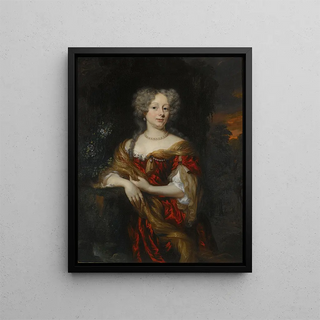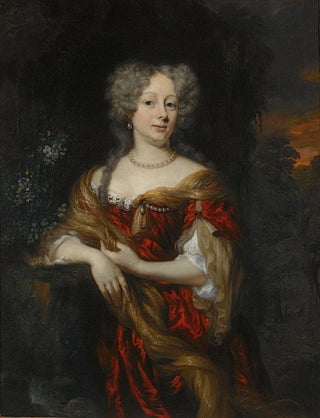Art print | Portrait of a lady - Nicolaes Maes


View from behind

Frame (optional)
Introduction captivante
The "Portrait of a Lady" by Nicolaes Maes is a work that embodies the essence of 17th-century Dutch portraiture. This painting, with its intimate atmosphere and striking realism, invites the viewer to immerse themselves in the refined world of Dutch bourgeoisie. The lady, whose gaze is both gentle and enigmatic, seems to capture the very essence of her being, illuminated with a delicacy that testifies to the artist's exceptional talent. Maes manages to create an emotional connection between the subject and the observer, making this work not just a simple portrait, but a true window into the past.
Style and uniqueness of the work
Nicolaes Maes's style is distinguished by his meticulous attention to detail and his ability to play with light. In "Portrait of a Lady," every element, from the drapery of the dress to the reflections in the hair, is treated with precision that highlights the artist's virtuosity. The nuances of color, ranging from warm tones to subtle shadows, give the composition a depth that draws the eye. The use of light, which illuminates the lady's face while leaving the background in a soft shadow, creates a staging effect, as if the figure is emerging from a dream. This realism, combined with an almost poetic sensitivity, makes this work a perfect example of baroque art, where emotion and technique meet in perfect harmony.
The artist and his influence
Nicolaes Maes, a pupil of Rembrandt, mastered to incorporate his master's lessons while developing a personal style that is uniquely his own. His career, marked by constant evolution, testifies to his commitment to art and his ability to capture the spirit of his time. Maes does not merely reproduce faces; he seeks to understand and convey the personality of his subjects, which sets him apart from many contemporaries. His influence extends beyond his era, inspiring many artists who, like him, sought to explore the complexity of the human soul through portraiture. Today, his work is recognized not only for its aesthetic beauty but also for its depth

Matte finish

View from behind

Frame (optional)
Introduction captivante
The "Portrait of a Lady" by Nicolaes Maes is a work that embodies the essence of 17th-century Dutch portraiture. This painting, with its intimate atmosphere and striking realism, invites the viewer to immerse themselves in the refined world of Dutch bourgeoisie. The lady, whose gaze is both gentle and enigmatic, seems to capture the very essence of her being, illuminated with a delicacy that testifies to the artist's exceptional talent. Maes manages to create an emotional connection between the subject and the observer, making this work not just a simple portrait, but a true window into the past.
Style and uniqueness of the work
Nicolaes Maes's style is distinguished by his meticulous attention to detail and his ability to play with light. In "Portrait of a Lady," every element, from the drapery of the dress to the reflections in the hair, is treated with precision that highlights the artist's virtuosity. The nuances of color, ranging from warm tones to subtle shadows, give the composition a depth that draws the eye. The use of light, which illuminates the lady's face while leaving the background in a soft shadow, creates a staging effect, as if the figure is emerging from a dream. This realism, combined with an almost poetic sensitivity, makes this work a perfect example of baroque art, where emotion and technique meet in perfect harmony.
The artist and his influence
Nicolaes Maes, a pupil of Rembrandt, mastered to incorporate his master's lessons while developing a personal style that is uniquely his own. His career, marked by constant evolution, testifies to his commitment to art and his ability to capture the spirit of his time. Maes does not merely reproduce faces; he seeks to understand and convey the personality of his subjects, which sets him apart from many contemporaries. His influence extends beyond his era, inspiring many artists who, like him, sought to explore the complexity of the human soul through portraiture. Today, his work is recognized not only for its aesthetic beauty but also for its depth






